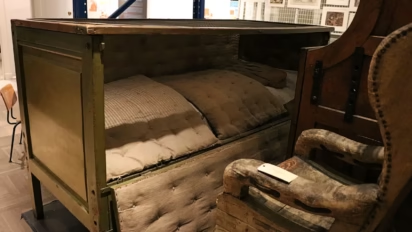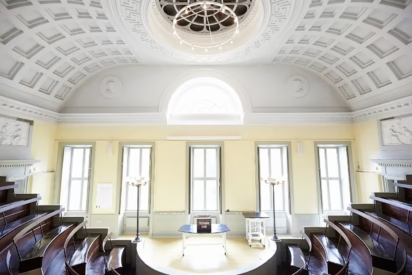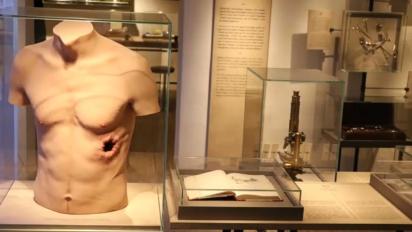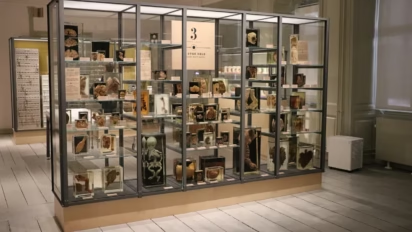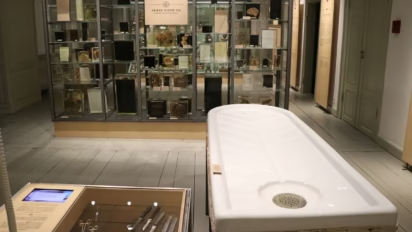The Medical Museion is the medical history museum of the University in Copenhagen with interesting exhibitions on medical instruments and diseased body parts.

The Medical Museion, formerly the Medical History Museum, is a relatively small museum but it has a large and diverse medical collection. Exhibits include historical instruments and medical devices, diseased body parts and organs, as well as the preserved anatomical theater from the late 18th century. A modern exhibition focuses on the connection between the brain and guts. The large Body Collected exhibition has many human bones, fetuses, diseased organs, and tissues on display but also explains modern techniques and treatments. The medical museum is interesting to visit despite its specialist nature. The Copenhagen Card is accepted.
Exhibitions in the Medical Museion in Copenhagen
The Medical Museion is part of the Faculty of Health and Medical Sciences of the University of Copenhagen and thus human organs and tissues are on display in certain sections of the museum. Although principally an academic institution, it is interesting to visit and most visitors will find some of the displays fascinating.
The medical museum has only around a dozen rooms — some very small — with the highlights the original auditorium used for autopsies and teaching, the body collection, and the mind and gut display.
En route to these three main exhibitions, visitors see several smaller rooms that briefly cover themes as diverse as kintsugi (golden repairs of the aging body), the history of psychiatry, braille, and a brief history of the Royal Academy of Surgeons.
Auditorium of the Medical Museion
A highlight of a visit to the Medical Museum in Copenhagen is the auditorium at the heart of the building. The building was inaugurated in 1787 as the Royal Academy of Surgeons and functioned as a training school for medical doctors until 1942.
The anatomical theatre of the original training school has remained in place and is architecturally the most interesting room in the building. It has a high coffered ceiling and the room is brightly lit through large windows. The student benches and stalls rise high around the lectern and the cadaver dissection table.
Mind the Gut Exhibition
Mind the Gut, in the basement of the building, is one of the two main exhibitions in the museum. It is a detailed look at the connection between the brain, gut, and bacteria.
A variety of themes are covered such as the connection between diet and mental health, how to measure feelings, and the messages between bowels and brain. It combines science, art, and cultural history.
A variety of interactive exhibitions are available to study aspects of digestion and diet in more detail. These are more advanced than the fistula in the stomach of Alexis St Martin that were used in the early 19th century to study how digestion took place — these experiments already showed that emotions such as anger changed the physical state of the stomach.
The Body Collected
For many, the highlight of the medical museum is the large The Body Collected exhibition on the top floor. Here, a variety of raw materials of medical science collected from the 18th century to the present are on display.
The large display cases follow the historical development of medicine — from the focus on the whole body, then organs, tissues and cells, and finally molecules. For example, large display cases have a collection of fetuses, then a dry collection of bones, diseased organs and body parts, and dissected tissue.
Interactive exhibitions explain the use of modern computer technology and microscopes, the study of DNA, and modern medicines and methods.
Medical Museion Visitors Information
The opening hours of the Medical Museion are Tuesday to Friday from 10:00 to 16:00 and weekends from noon to 16:00.
Admission tickets are DKK90 for adults, DKK60 for students, and DKK50 for children 7 to 17, and DKK60 for senior citizens. The Copenhagen Card is valid.
Almost all displays are described in both Danish and English. Free English guided tours are usually available weekdays at 14:00 and weekends at 13:30 — ask at reception or book online in advance.
The Medical Museion is a relatively small museum and may easily be seen in less than an hour, although those with a particular interest in medical history could easily stay much longer. For casual visitors without a special interest in medicine, the admission may be a bit steep but travelers with the Copenhagen Card may find it worth stopping for a quick visit.
The Medical Museion is at Bredgade 62 — in the same block as the Danish Design Museum and near the Marmorkirke Metro station, the Marble Church, and Amalienborg Palace. The museum is in a late 18th-century building with many steep stairs and no elevators. It is totally inaccessible to wheelchair users.
